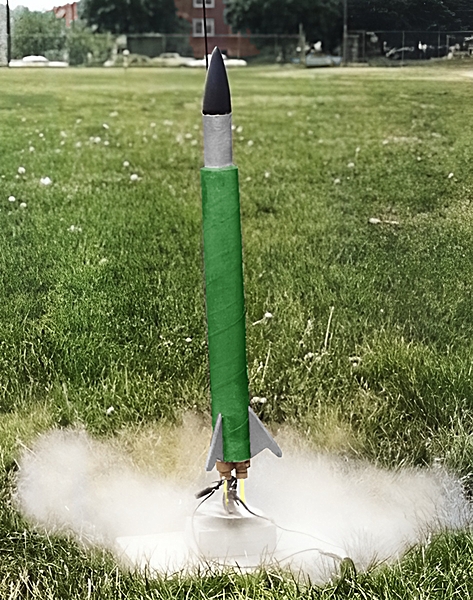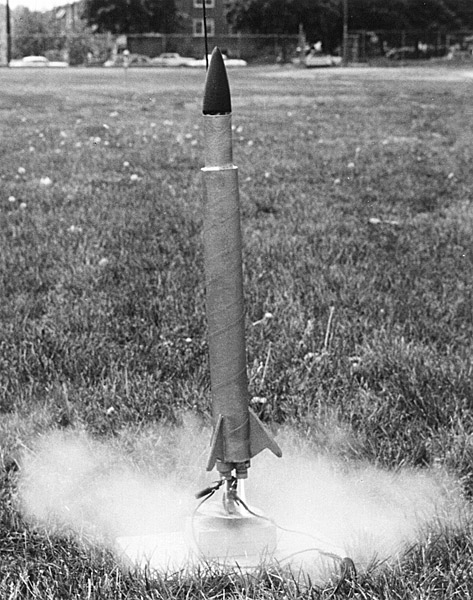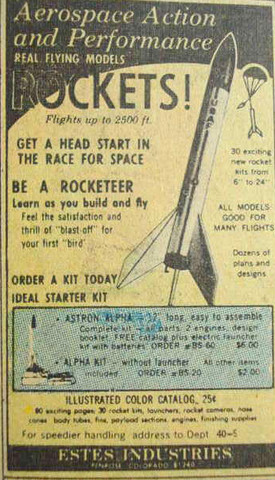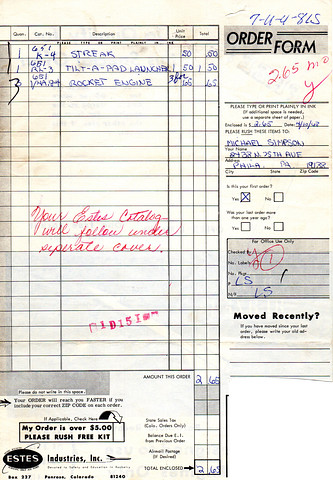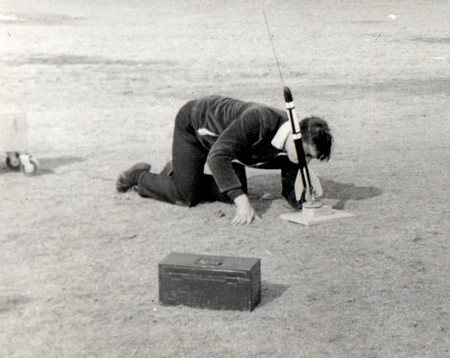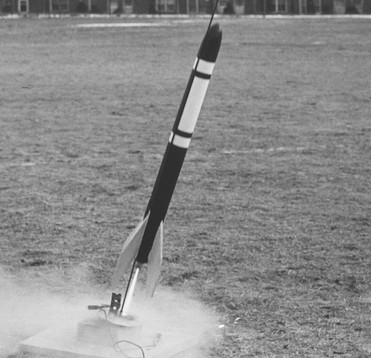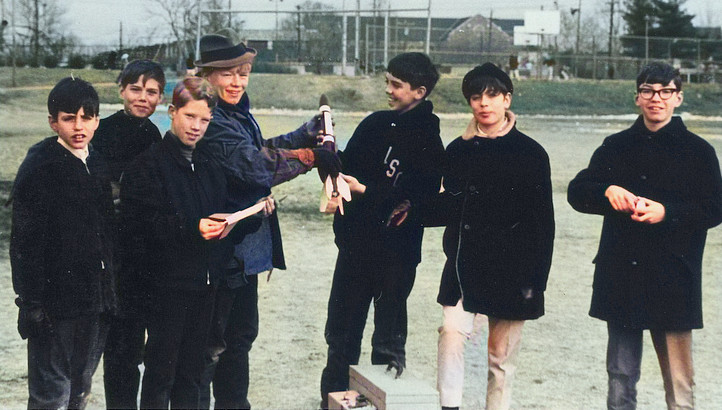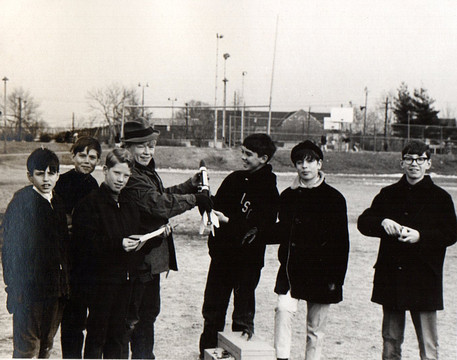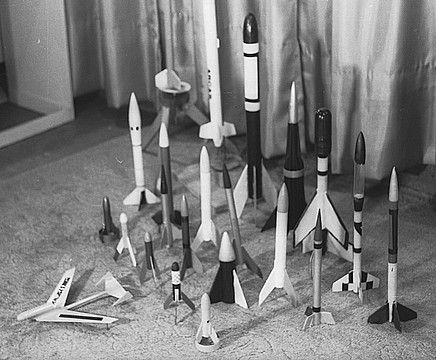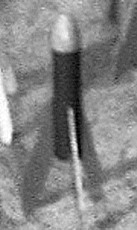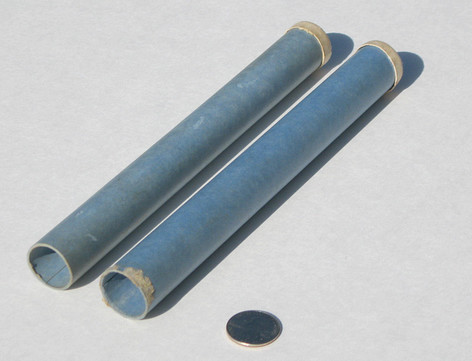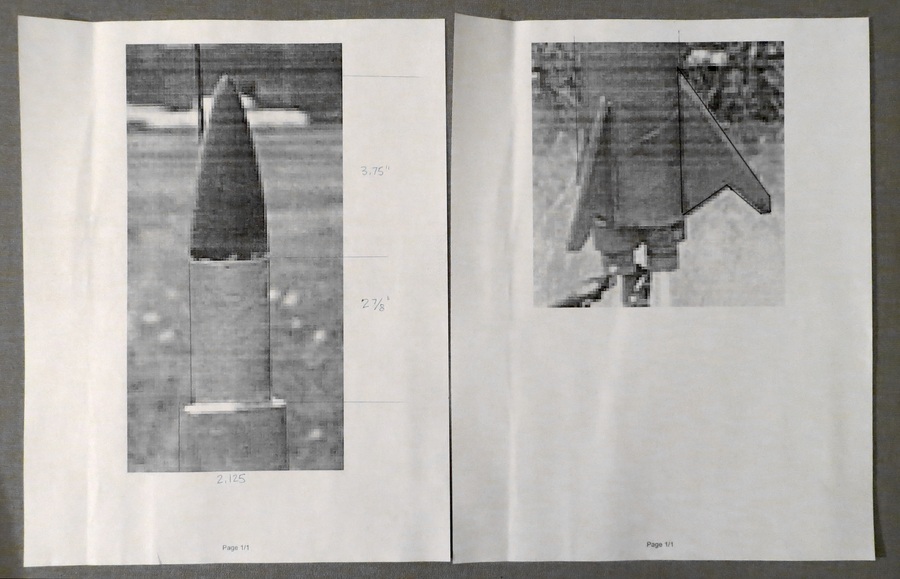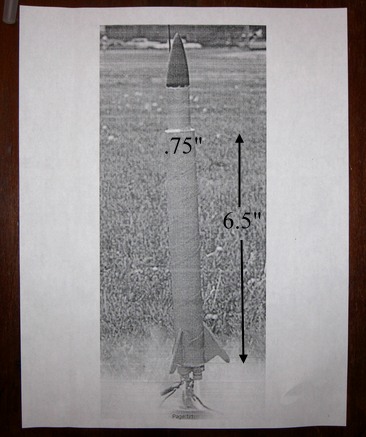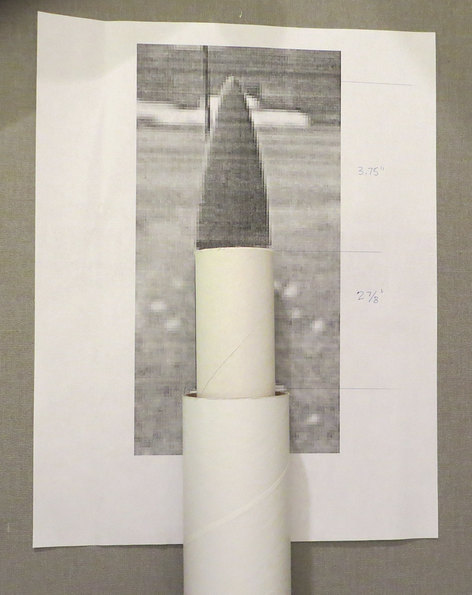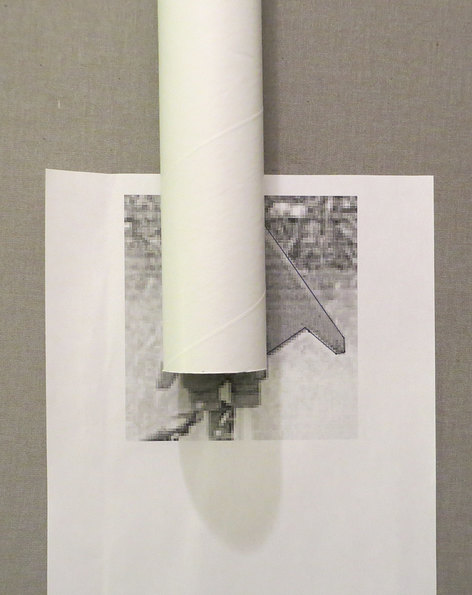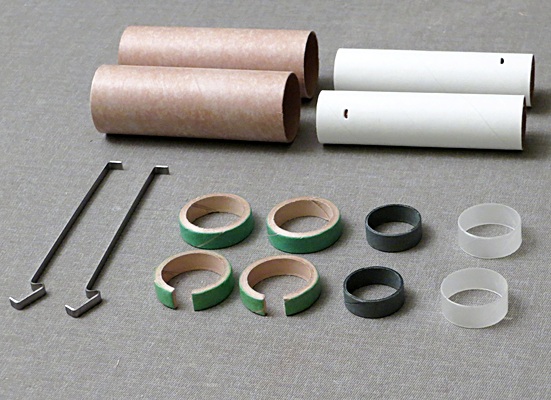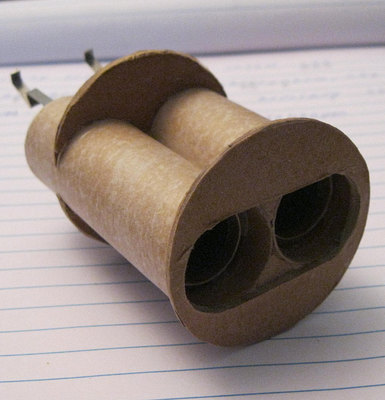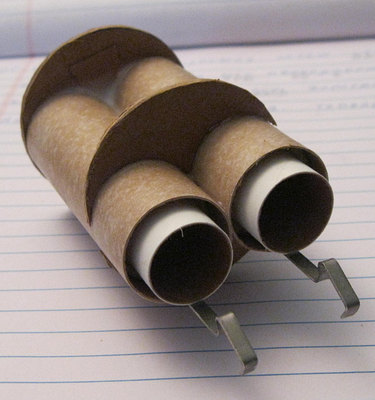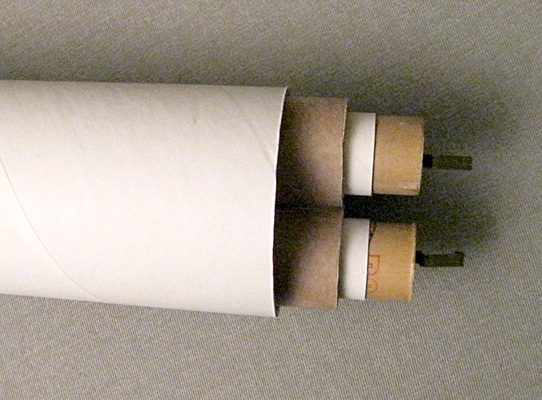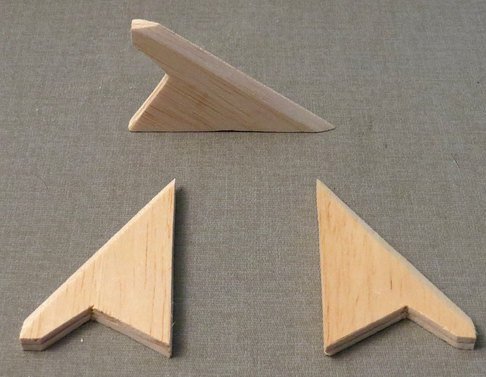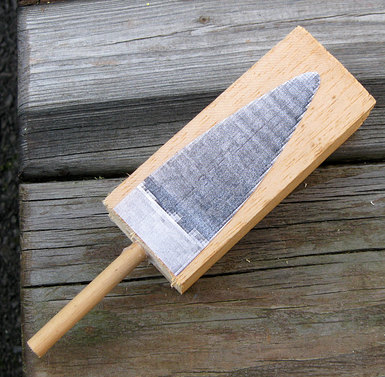|
The Journeyman was built by Joe Jones in the summer of
1969 and launched once. I've seen the above picture, taken by Joe, off
and on over the following 45 years. There is a copy in the ARO log book
and of course Joe had a copy, which is where my copy came from. Back
then we developed and printed our own film. The above photo was taken at
Simon's Recreation Center (the "Rec") in the West Oak Lane section of
Philadelphia.
The ARO, which is short for "Aerodynamics Research Organization,"
was created in April of 1968 in Joe's basement with Joe as the president
and Jimmy Nolen and myself as secretaries. There were a few other loose
members, namely Jeff Sidewater, Mike Kaplin, Clifford Eike and a kid on
Joe's street named Ronnie Fisher.
Our first launch was on April 10th, 1968. We were in 8th grade.
April 10, 1968 was a Wednesday, so we were on Easter vacation. It was 65
degrees out and we launched for 1/2 hour, from 12:20PM to 12:50PM. We
launched the Alpha, Arcas, Skyhook and the Gyroc, all of which belonged
to Joe.
When Jimmy and I
met Joe in 1968 he was already president of the West Oak Lane Rocket
Launching Society; "W.O.L.R.L.S," pronounced "walrus." At that time he
was the only one with any rockets so it was natural he was president of
the new club. As a matter of fact, Jimmy and I didn't know anything
about rockets till Joe showed us. Joe also showed us how to make block
busters and cherry bombs, taught us how to develop film and make prints,
and was the first one of us to have a CB radio, and then a Ham radio
station.
|
I had seen these ads in the back of Popular
Science, but never thought you could actually build a rocket at
home. Rockets were, like, 300 feet tall and we lived in a row
house in Philadelphia. |
I sent an order to Estes Industries the very day
of the first launch.
Here it is dated April 10, 1968! Click on it to see full size.
(Will open in a new tab or window.)
|
We had 14 launchings in 1968, including one
on April 26th where the only rocket launched was the Streak I
ordered on April 10th. Photographs from our 1968 year are rare,
as I didn't have a camera and Joe lost a lot of stuff when his
house was flooded in 2000. The pictures below are from January
17, 1969. |
|
|
|
|
Joe preps the Big Bertha at Simon's Recreation
Center. |
The Big Bertha. |
|
|
|
|
|
|
In this colorized B&W photo, Jimmy Nolen is third
from the left. Yours truly is at far right. |
|
|
|
Original photo. |
Our fleet in April of 1968. All but a few belong
to Joe.
(Click to enlarge) |
|
|
|
|
Here is the "Streak" I ordered on April 10, 1968,
painted metallic blue with metallic green fins and nosecone. It
was launched on April 26th but I never got to see it. Though I
had been to my first launch just two weeks before, the rockets
were relatively large and the engines used were relatively
small. Not having much money, I selected the Streak because it
was the cheapest rocket in the catalog. I didn't realize it was
also the lightest, and used for altitude contests.
Maybe it was because I was standing so close to
the pad, or maybe because I blinked, when the Streak took off it
seemed to vanish in a puff of smoke. I mean it literally just
vanished. I remember looking at the pad and wondering what had
happened, as my rocket that I had so carefully assembled and
painted had turned into smoke. It took me a few seconds to
realize it was in the air, but when I looked up I didn't see
anything up there. Neither did anybody else! Well, it had to
come down in a minute, right? We searched the field and never
found it. It really had vanished. |
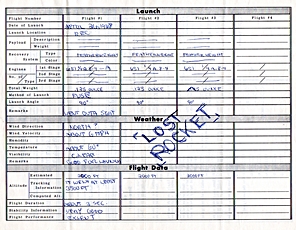
Click to enlarge |
|
|
The launch report from April 26 says the flight
performance of the Streak was "exlent." It was launched with a
1/4A.8-4 engine and the estimated altitude was 2000 feet, but it
actually went "at least 3500 feet." Now don't forget I was 11
years old and this was my first rocket. OF COURSE it would go
much higher than the Estes catalog said it would. In reality, I
had no idea how far 2000 feet or 3500 feet even was. To me, it
was almost in outer space.
In 2023 plugged the engine and rockets specs into an altitude
prediction program (found in the QuickBASIC part of this
website) and it actually went about 195 feet high. When the
engine burnt out the rocket was moving at 132 FT/SEC, which is
around 90 miles an hour. Even if I hadn't been so close to the
pad, it's hard to see a 5 inch tall rocket moving at 90 miles an
hour.
I wrote "LOST ROCKET on the report as though I had a "LOST
ROCKET" rubber stamp.
Not to be defeated, on May 5, 1968, I ordered another Streak
from Estes! |
|
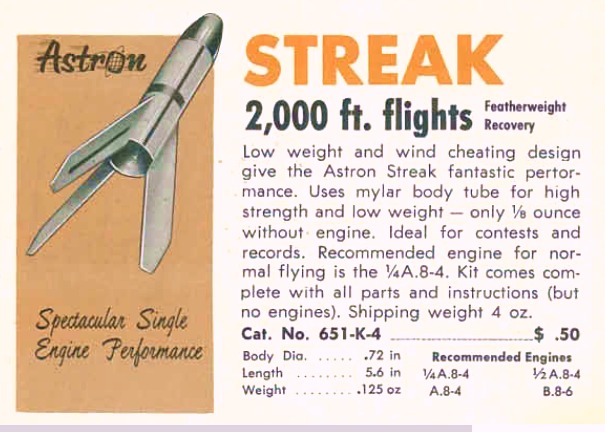 |
1968 catalog photo of the Streak.
The defining characteristic of the Streak was that it was the
cheapest rocket in the catalog.
Years later when we were in our 20s one of the biggest contributing
members to the ARO was a guy named Bob Priess, nicknamed "Stripes." Bob
supplied us with "denominations of currency" and bankrolled our rocket
adventures. He was also an expert at RC model plane construction. Bob
and I both won the Estes "Design of the Month" contest and we each used
our winnings to purchase the mother of all kits, the Saturn V.
April 10th is the
official anniversary of the ARO. Bob and I are still around,
54 years later (as of 2023). Thanks to the Internet we stay in touch.
Joe and Jim have passed away.
Building the
replica of the Journeyman
I recently
got the urge to recreate the Journeyman and I wanted it to be the same
size as the original. Through a few emails with Joe I learned it was
built from scratch from a paper towel tube, a tube from some Christmas
wrapping paper, engine mailing tubes*, etc.
It had a home made nose cone. Everything was centered with glue soaked
paper towels. It was painted metallic green and silver with a flat black
nose cone. It weighed exactly one pound with engines.
*
Engine mailing tubes were very hard, blue colored tubes that
Estes Industries shipped their engines in.
These two are from 1969 and are exactly the same as the ones in
the original Journeyman. A quarter is shown for size comparison.
|
|
